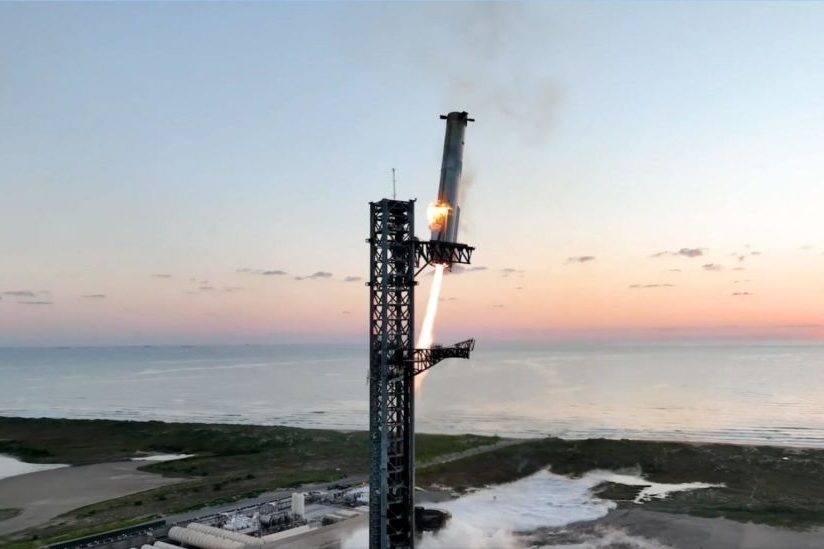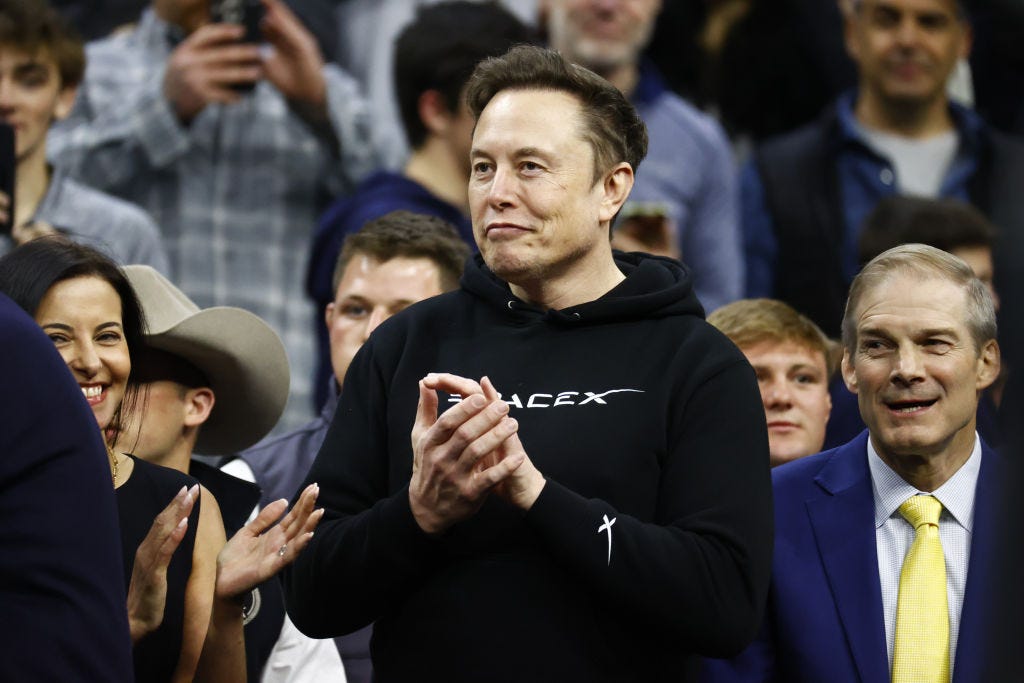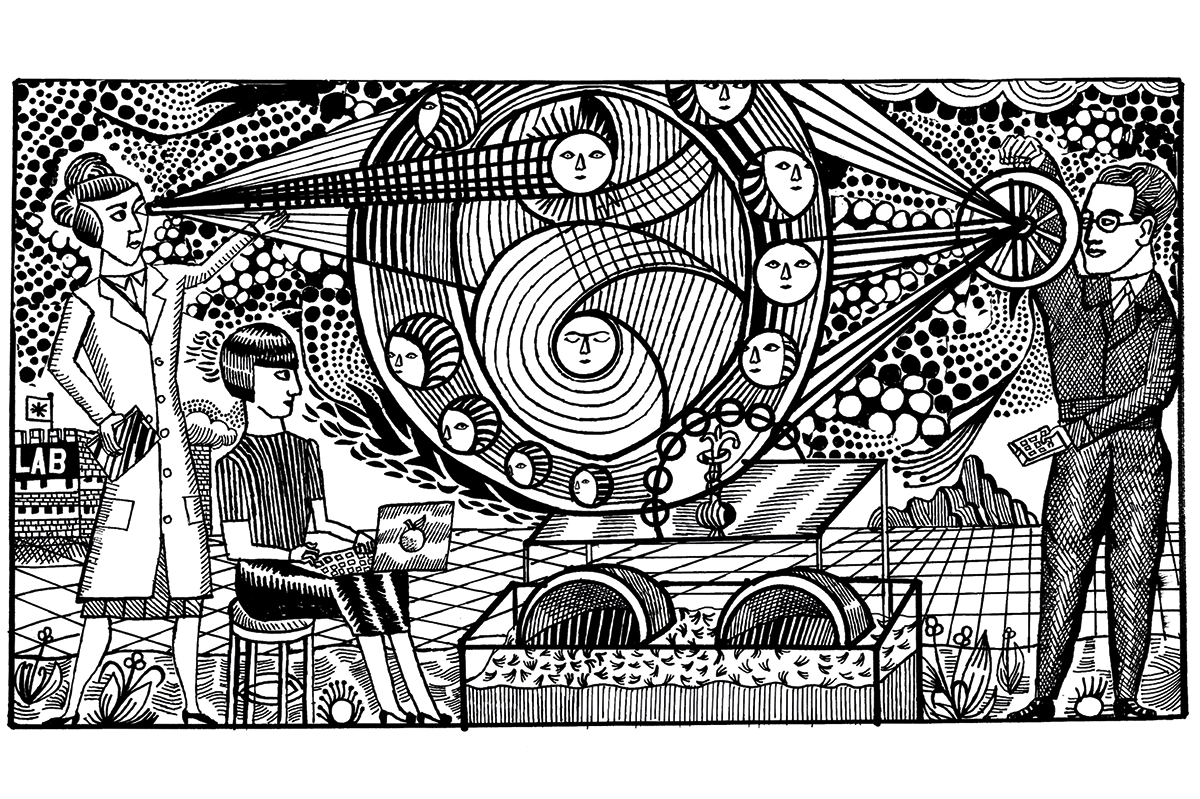Technological revolutions can only change the world when the new technology becomes cheap enough for it to be widely applied. Just ask Elon Musk.
The rocket age began with Germany’s V-2 in 1944, but the single-use technology was so expensive that it required state resources to utilize. Then, last Sunday, SpaceX’s Starship rocket booster, the most powerful ever launched, returned from space and was secured by its gantry for reuse. Thus it became, in the words of the New York Times, “more like a jetliner than a rocket.” It is estimated that reusable rockets will reduce the cost per pound of launching things into space by at least an order of magnitude and a new space age can now begin.
This make-it-cheap-to-change-the-world trick has happened many times before in the history of technology.
As Britain’s coal and tin mines went deeper in the late seventeenth century, for instance, water became more and more of a problem. A new technology was needed to deal with it, and it was Thomas Newcomen who supplied it. His practical steam engine, demonstrated in 1712, was the first new source of work-doing energy since the windmill in the eighth century.
Newcomen, an ironmonger who specialized in mining equipment, improved an earlier design for a steam engine by Thomas Savery that didn’t work well. Newcomen’s engine used steam to push up a piston and then used water to cool the cylinder, creating a vacuum that pulled the piston back down.
The Newcomen engine could lift prodigious amounts of water out of mines, but it also used prodigious amounts of fuel to do so, as the cylinder had to be reheated after every stroke. This limited its use to places where coal was immediately at hand. By 1733 there were only about 125 Newcomen engines in use in mines in Britain and Europe.
Then, in 1765, a Scottish engineer named James Watt invented the separate condenser. By drawing off the steam and condensing it in another chamber, and by surrounding the cylinder with a “steam jacket” to keep it warm, Watt’s engine reduced fuel consumption by 90 percent. This, in turn, greatly increased the situations where steam engines were economically practicable.
In 1783, Watt devised a mechanism for converting the steam engine’s reciprocating motion into rotary motion. Now the steam engine could power almost any type of machinery.
The resulting flood of low-cost, work-doing energy into the economy, first in Great Britain and then Europe and the United States, not only supercharged the aborning Industrial Revolution, it created vast new wealth as well, as technological revolutions always do.
The synergy between cheap energy and new wealth (Benjamin Disraeli coined the word “millionaire” in 1827) produced a new economic, social, and political universe in only a few decades.
The railroad, the most important secondary steam technology, revolutionized long-distance transportation for both passengers and freight, beginning in the 1830s. But individual transportation was still horse-drawn as late as the end of the nineteenth century.
By then many engineers were working on developing the technology needed to produce a practical automobile. Steam and electricity both powered early entries, but it was the new internal combustion engine that seemed to many the most promising. With the development of the carburetor about 1890 to regulate the mixing of air and gasoline, the automobile attained practicality.
But early automobiles were manufactured individually, just as carriages had been. Thus they were very expensive and the market was largely limited to rich-men’s toys. It is not a coincidence that the first American automobile racing trophy was the Vanderbilt Cup.
Henry Ford had a different idea. He wanted to make cars available to the middle class and in 1908 he introduced the Model T, selling for a mere $790. Fifteen thousand orders came in within a few days. Completely standardized (“you can have any color you want, so long as it’s black,” Ford famously said), the basic design of the Model T did not change over its nineteen-year, 15 million-unit production run. But how to manufacture it did. In 1913 Ford introduced the assembly line, reversing the process by which carcasses were taken apart in meatpacking plants. By 1924 the price of a Model T had dropped to only $290, despite the inflation caused by World War One.
Horses, which had been ubiquitous in American city streets in 1900, had vanished by 1920, along with their enormous pollution. As the automobile industry grew into the largest in the country, sheet steel, rubber, glass manufacture, and road building grew with it. Meanwhile, the leather industry, a major part of the nineteenth-century economy, shrank into little more than a niche business.
The world’s first true programmable computer ENIAC (Electronic Numerical Integrator and Computer) came on line in 1946. It was the size of a school bus, weighed over twenty-five tons, had 18,000 vacuum tubes, and 5 million hand-soldered joints. It sucked up 150 KW of electricity.
The development of the transistor in 1948 greatly reduced the size, weight, and electricity consumption of computers. But the need to largely hand-wire them continued, making them hugely expensive and therefore used only by governments and big business.
Thus, had every computer in the world suddenly stopped working in, say, 1965, the average man on the street wouldn’t have noticed until his bank statement failed to arrive at the end of the month. Today, however, were every computer in the world to stop working, civilization would collapse in an instant. Nothing — from Boeing 777’s to automobiles to electric toothbrushes — would function.
What happened? The microprocessor, introduced by Intel in 1971, happened. The microprocessor is essentially a tiny computer on a chip. While the machine tools needed to manufacture microprocessors are very expensive, once built they can turn out chips like cookies at very low cost per unit.
The first commercial microprocessor, the Intel 4004, was the size of a postage stamp and contained 2,300 transistors. But Gordon Moore, Intel chairman, predicted that the number of transistors on a chip — an index of computing power — would double roughly every two years. He was right. The latest model iPhone utilizes a staggering 14 billion transistors.
So the lesson is clear. New technology is great, but it’s only cheap new technology that changes the world.


























Leave a Reply